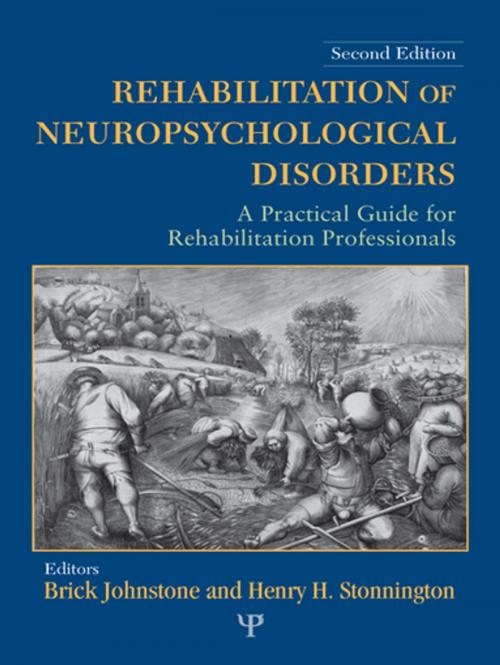Rehabilitation of Neuropsychological Disorders
A Practical Guide for Rehabilitation Professionals
Nonfiction, Health & Well Being, Psychology, Neuropsychology| Author: | ISBN: | 9781136874024 | |
| Publisher: | Taylor and Francis | Publication: | February 25, 2011 |
| Imprint: | Psychology Press | Language: | English |
| Author: | |
| ISBN: | 9781136874024 |
| Publisher: | Taylor and Francis |
| Publication: | February 25, 2011 |
| Imprint: | Psychology Press |
| Language: | English |
Many contemporary neuropsychology texts focus on neuropathology, the description of specific tests, and the differential diagnosis of central nervous system disorders. However, increasingly sophisticated neuroradiological techniques, managed care factors, and the growth of rehabilitation necessitates that rehabilitation professionals provide more functionally (versus diagnostically) useful evaluations to improve the neuropsychological functioning and community integration of persons with brain injuries or diseases. This book aims to fill this gap and to provide an overview of standard neuropsychological treatment strategies for specific cognitive impairments that are identified on testing. The new edition enhances this goal with three chapters outlining important recommendations, services, and issues for rehabilitation professionals.
Written by a team of experienced scientists and professionals, the volume provides a universal taxonomy of neuropsychological abilities (emphasizing relatively simple terms), with a list of basic rehabilitation strategies to improve impairments identified in general cognitive domains. Specific chapters are included on the neuropsychological remediation of memory, attention, language, visual-spatial skills, and executive function impairments. Each chapter proposes a taxonomy of relatively unitary cognitive constructs (e.g., divided attention, sustained attention, focused attention), lists tests which may be used to assess each cognitive construct, and provides specific rehabilitation strategies to improve or accommodate the identified neuropsychological impairments. The final chapters cover basic resources and issues of which the rehabilitation professional needs to be aware (vocational rehabilitation, disability determination, and guardianship issues).
This new edition provides a wealth of useful information for family members, rehabilitation professionals, and others who work with persons with brain injury in improving the community functioning for those with brain dysfunction. An accompanying website facilitates access to the resources and strategies from the book, allowing the practitioner to cut and paste these recommendations into their clinical reports.
Many contemporary neuropsychology texts focus on neuropathology, the description of specific tests, and the differential diagnosis of central nervous system disorders. However, increasingly sophisticated neuroradiological techniques, managed care factors, and the growth of rehabilitation necessitates that rehabilitation professionals provide more functionally (versus diagnostically) useful evaluations to improve the neuropsychological functioning and community integration of persons with brain injuries or diseases. This book aims to fill this gap and to provide an overview of standard neuropsychological treatment strategies for specific cognitive impairments that are identified on testing. The new edition enhances this goal with three chapters outlining important recommendations, services, and issues for rehabilitation professionals.
Written by a team of experienced scientists and professionals, the volume provides a universal taxonomy of neuropsychological abilities (emphasizing relatively simple terms), with a list of basic rehabilitation strategies to improve impairments identified in general cognitive domains. Specific chapters are included on the neuropsychological remediation of memory, attention, language, visual-spatial skills, and executive function impairments. Each chapter proposes a taxonomy of relatively unitary cognitive constructs (e.g., divided attention, sustained attention, focused attention), lists tests which may be used to assess each cognitive construct, and provides specific rehabilitation strategies to improve or accommodate the identified neuropsychological impairments. The final chapters cover basic resources and issues of which the rehabilitation professional needs to be aware (vocational rehabilitation, disability determination, and guardianship issues).
This new edition provides a wealth of useful information for family members, rehabilitation professionals, and others who work with persons with brain injury in improving the community functioning for those with brain dysfunction. An accompanying website facilitates access to the resources and strategies from the book, allowing the practitioner to cut and paste these recommendations into their clinical reports.















